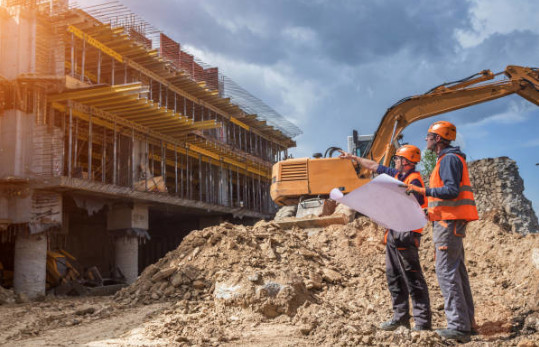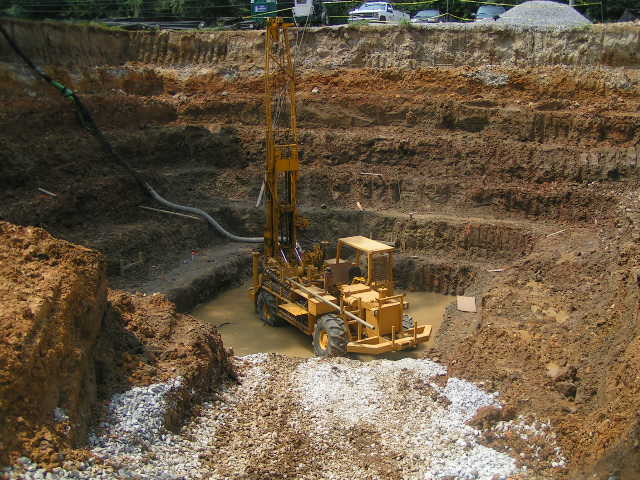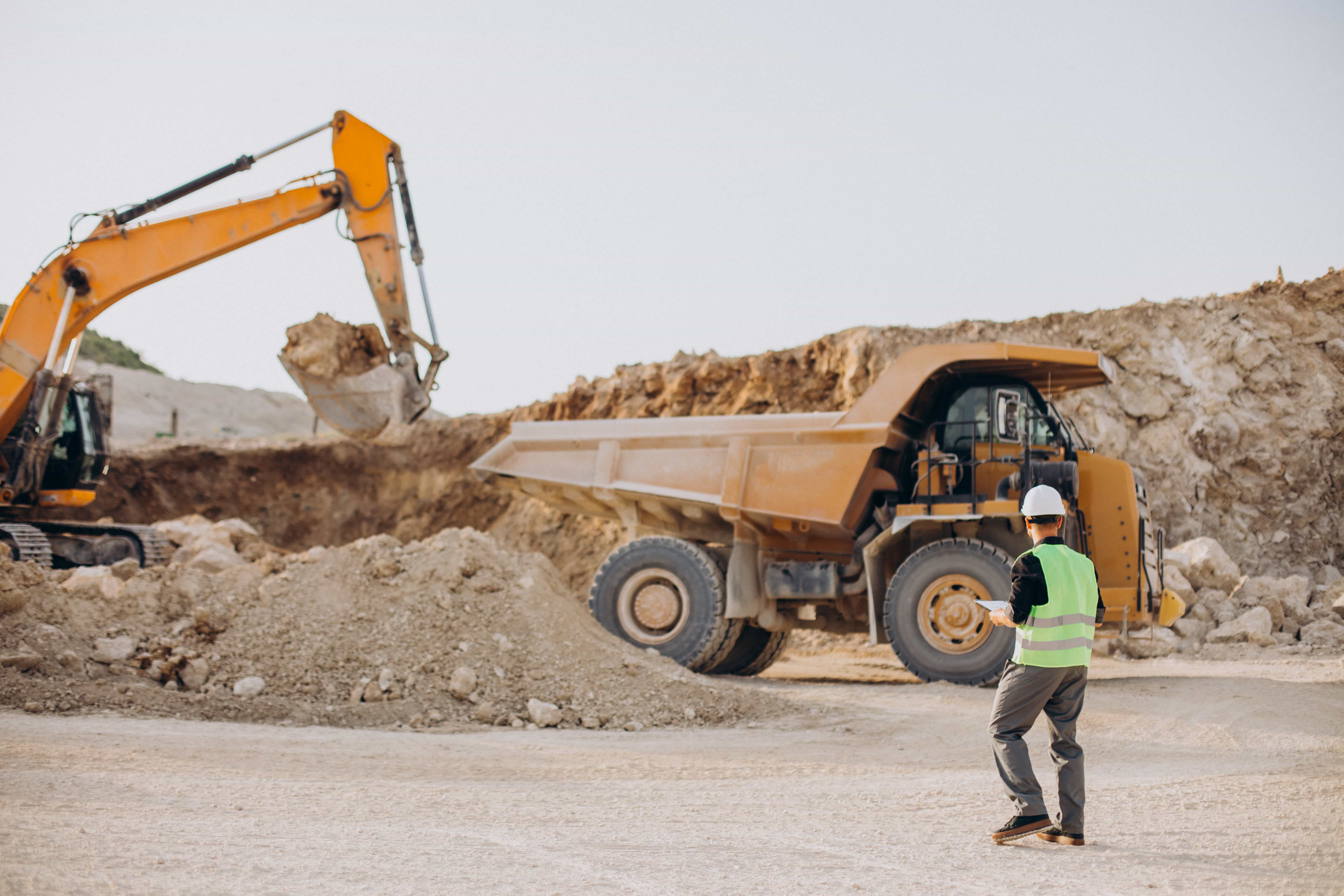Leading Consulting Civil Engineering Companies for Infrastructure Projects
Wiki Article
How Consulting Engineers Enhance Geotechnical Engineering Projects: Insights Into Their Expertise, Techniques, and Collaborative Approaches
Consulting designers are critical in enhancing geotechnical design tasks, using their specialized expertise to browse the intricacies of subsurface problems. Their techniques incorporate a series of site investigation techniques, including Standard Infiltration Examinations (SPT) and Cone Penetration Tests (CPT), which inform important choices throughout the layout and building stages. Moreover, their joint methods foster communication amongst diverse job stakeholders, ultimately forming the job's trajectory. As we analyze the diverse duties these specialists play, it comes to be clear that their payments expand beyond technological competence, motivating a more detailed check out the implications for task success.Function of Consulting Engineers
The expertise of getting in touch with designers in geotechnical engineering is essential to the effective implementation of construction projects. These experts play a pivotal function in evaluating dirt and rock residential properties, which are critical factors influencing style and construction choices. By performing thorough site examinations, speaking with designers accumulate important information that informs the layout process, making certain projects are constructed on secure and appropriate ground.Consulting designers likewise give invaluable insights right into danger administration (geotechnical geologist). They determine possible geotechnical dangers, such as landslides, soil liquefaction, and negotiation issues, allowing stakeholders to carry out effective reduction techniques. Their competence help in optimizing structure designs, which can result in considerable cost savings and enhanced safety and security
Furthermore, speaking with designers act as an important web link between project proprietors, designers, and specialists. Their capacity to translate complex geotechnical data right into workable referrals fosters partnership and facilitates notified decision-making throughout the job lifecycle. This multidisciplinary technique not just boosts task performance however additionally makes sure conformity with regulatory requirements and ideal techniques.
Key Approaches in Geotechnical Engineering

One key method is site investigation, which includes performing area tests and lab evaluations to gather data on subsurface conditions. Techniques such as Criterion Infiltration Testing (SPT) and Cone Infiltration Screening (CPT) are commonly utilized to assess soil stratigraphy and stamina. Additionally, geophysical methods, including seismic and electric resistivity studies, give non-invasive ways to examine subsurface attributes.
An additional crucial approach is mathematical modeling, which enables engineers to simulate various situations and anticipate how soil-structure interactions will act under various loading problems. Finite Component Evaluation (FEA) is a typical method utilized in this context.
In addition, the style of foundations, preserving structures, and earthworks depends greatly on these methods - geotechnical geologist. By incorporating sophisticated logical tools with area information, speaking with engineers can create customized solutions that address certain task difficulties, inevitably contributing to the security and security of building jobs
Value of Dirt Analysis
Soil analysis functions as a foundational component in geotechnical engineering, offering vital understandings right into the physical and chemical residential or commercial properties of soil required for effective building planning. Recognizing dirt characteristics is essential for determining its load-bearing capacity, drainage habits, and potential for negotiation or instability. Comprehensive soil investigations, including sampling and lab testing, aid recognize parameters such as soil kind, wetness web content, thickness, and shear strength.
These analyses educate the selection of proper building and construction methods and materials, inevitably affecting task security and long life. For example, cohesive soils might need various structure layouts contrasted to granular soils, necessitating tailored design remedies. Additionally, dirt evaluation help in identifying pollutants that might posture threats to human health or the atmosphere, enabling the growth of mitigation methods.
Including dirt evaluation into the very early stages of task growth assists to lessen unforeseen difficulties, guaranteeing that engineers can anticipate and address prospective problems before they intensify. By developing a thorough understanding of the site conditions, seeking advice from designers can optimize design effectiveness and lower costs, therefore enhancing the overall success of geotechnical engineering tasks.
Joint Approaches in Jobs
Effective geotechnical jobs often rest on collaborative approaches that unite diverse experience from various self-controls. Reliable cooperation among seeking advice from engineers, rock hounds, ecological researchers, and building professionals is essential for addressing complicated difficulties and maximizing job outcomes. By leveraging the unique skills and knowledge of each employee, jobs can benefit from an all natural understanding of the site problems, regulatory needs, and engineering constraints.Regular interaction and interdisciplinary meetings facilitate the sharing of insights and promote a society of synergy. These collaborative efforts make it possible for the recognition of prospective threats early in the task lifecycle, permitting timely reduction methods. In addition, incorporating comments from stakeholders, including regional communities and governing companies, makes certain that all viewpoints are considered, boosting task approval and conformity.
Furthermore, the integration of innovative innovations, such as Geographic Information Systems (GIS) and Building Information Modeling (BIM), additional boosts collaboration. These devices allow for the real-time sharing of data and visualization of geotechnical problems, promoting educated decision-making. Eventually, a collective approach not only enhances project implementation however also lays the structure for cutting-edge services to complicated geotechnical engineering difficulties.
Effect On Task Outcomes

Consulting engineers employ innovative approaches such as risk evaluation and predictive modeling, which enhance the accuracy of job projections. Their ability to incorporate ingenious innovations, like geotechnical instrumentation and information analytics, further refines the style and building and construction procedures. Because of this, jobs experience enhanced effectiveness, minimized costs, and lessened delays.
Furthermore, fostering effective communication and collaboration among staff member boosts problem-solving abilities. When obstacles occur, a united front enables quick identification of remedies, protecting against potential troubles. Inevitably, the collaborative initiatives of consulting designers add to better results, making certain that projects meet both governing standards and client expectations.
Verdict

Report this wiki page